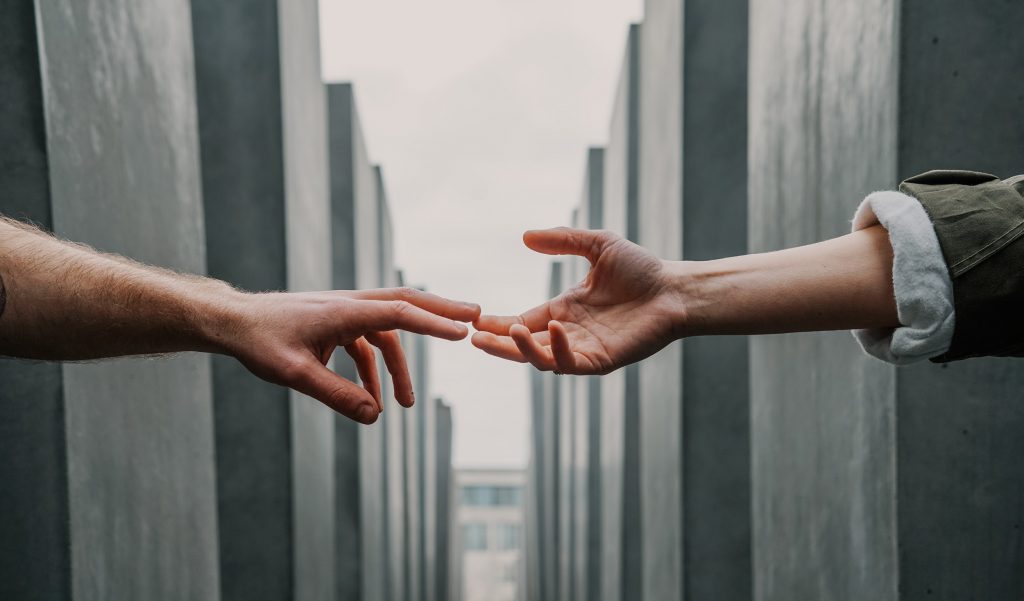During the COVID-19 epidemic we have all become effective germaphobes. We are advised to avoid going out, and if we do so, to keep our six-feet distance from each other. Under no circumstances we are to avoid crowds, doorknobs, table surfaces, and most of all – touching our faces. No nose-picking, no eye-rubbing, no thoughtful chin-holding, and no playing with your hair. If you absolutely must cough, do it in a paper towel that you dispense immediately and if that is not an option, at least plant your face in your sleeve before erupting. Wear a mask, ventilate, disinfect, wash your hands, have Zoom meetings, Teams lectures, and Google Hangout parties. Netflix – just don’t chill.

Now that we have painstakingly learned these norms, the discussion on when and how we are to return to normalcy has begun. While writing this dozens of COVID vaccines are under development, so we might predict some light at the end of the tunnel. But what will “going back to normal” actually mean? Will it be business as usual circa 2019 or will some aspects of our daily life change forever, or at least until the next norm-shifting cataclysm?
Teaching, especially in higher education, has moved online, and discussions on this forced social experiment have already begun. Will we go back to the old face-to-face model? While some think it’s too early to say, there are also clear proponents to the idea of never going back and of course arguments to cast doubt on the idea of shifting to a pure virtual environment.
Work meetings have been pushed to a virtual world as well. Will we go back to being bored in the board room or is wearing a jacket but no pants the future of business meetings? Pushing aside the discussion on most meetings being useless in the first place, the topic of virtual meetings taking over face-to-face meetings has its proponents and opponents. It seems we do not yet have a consensus when it comes to virtual education or virtual business meetings. We will have to wait and see. And what about handshakes, hugs, high-fives, and afterwork drinks?
The discussion on moving our interaction online in all of these segments seems to hinge on what you think is the point of the interaction: information exchange or social exchange? There are clear and valid arguments to be made for both camps. In the case of information exchange, it is important for the students and teachers to form informational exchange networks so the flow and creation of knowledge can be made effective. Modern tools such as instant messaging, virtual environments and cloud-based collaboration platforms seem to facilitate the creation of such exchange networks well. There is evidence of this even from an earlier epoch of e-learning tools – a time before Facebook, cloud computing and Zoom. In fact, a meta-analysis of research on online learning from between 1996 and 2008 already “found that, on average, students in online learning conditions performed better than those receiving face-to-face instruction.”
A point for the online learning camp.
On the other hand, there is evidence that campus life helps students foster a greater openness to diversity through students’ relationships with peers. Exposure to diversity has also been linked to enhancing the educational experience of students. Of course there might be a chicken-and-the-egg question raised, but there is also solid evidence linking openness to experience to higher cognitive and intellectual capacities as well as general intelligence. We also know that creativity, which is also linked to openness to experience, can be fostered. It also a well-documented fact that social connections are a core pilar of mental health as well as general well-being and longevity.
One point for the face-to-face learning camp.
The fact is that we are psychophysical products of gene-culture coevolution. That is to say, we are a biological creature that comes with the baggage of a highly socially evolved primate that has ascended to arguably the highest state of social co-operation which has progressed from group hunting, coordinated stone-throwing, through tribal cohesion, group-identity, dancing and non-kin altruism, to creating culture, larger-than-life narratives, religion, nation states, and useful fictions such as money and democracy. All of these have evolutionary biological bases from the oxytocin that creates bonds between us, to the mirror neurons that let us feel each other’s feelings. We build up higher concepts of love and family on the building blocks of biological bimodal pair-bonding strategies and intersocial comparative advantage.
We might not be blank slates, but we are also conscious beings capable of linguistic abstract thought. We can build narratives that ascend our biological foundations and create meaning out of our mutual knowledge of self-awareness. We have a rational information processing unit inside us, and although it runs on a million-year-old physical system, it is capable quantum leaps of cultural evolution utilizing neuroplasticity and standing on the intellectual giants of a thousand ancestors.
However, we also desperately need the socio-physical interaction with each other. We are more of a eusocial hive creature than we might give credit to. The controversial Harry Harlow already demonstrated the deep-seeded need for a mother’s touch, and a stream of research has shown how important human touch is for us in early development, our emotional control, our interpersonal relationship, and many other factors.
So, are we in the information exchange or in the social exchange game?
So, are we in the information exchange or the social exchange game? Will we move to an all-Zoom meeting room, an all-Teams classroom, and never shake hands or hug again? It looks like only half of what we need is truly satisfied with purely virtual solutions. That is not nothing. Maybe we will dissect our working and learning a bit more and some segments will truly stay in in the ether. But it seems highly unlikely we can dislodge the social element from our work or study environments. We seem to be built for social water cooler gossip as much as practical information change. Students need to meet, to build identity, to learn from diversity, and to create community and fall in love. Not just to learn. And workers need to talk smack about the boss, chitchat about impossible clients, and have Friday pizza lunches. Not just to produce.
A handshake? Well, that seems a learned habit, since we have plenty of non-palm-touching greetings such as bowing, which is used widely in many Asian countries, the Roman salute or the common Muslim practice of placing a hand over the heart. So, we can probably switch to a less germy greeting if we want to. However, I bet a million years of evolution we will not get rid of hugging or holding hands with a loved one for that matter.
Jori Grym
Doctoral Candidate
